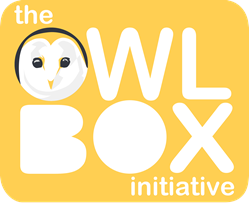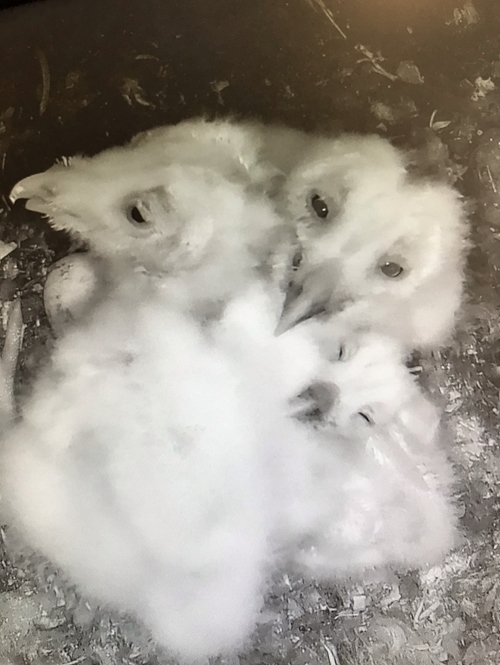3 Minute Read
By Inca Johnson, GWCT Farmland Ecology Placement Student
 Time has moved swiftly on for the Owl Box LIVE chicks. Out of the four eggs that were laid during April, three successfully hatched and the adults have continued to feed the young, who are looking strong in readiness for their first flight into the world.
Time has moved swiftly on for the Owl Box LIVE chicks. Out of the four eggs that were laid during April, three successfully hatched and the adults have continued to feed the young, who are looking strong in readiness for their first flight into the world.
Each development stage of a barn owl chick is crucial to increase their chances of successfully fledging, so we take this opportunity to look back at these important stages before the chicks in the Owl Box LIVE nest start to fledge.
Hatching to week 3
Owls are an altricial species, born immobile, blind and unable to regulate their own body temperature, making them entirely dependent on the care of their parents when first hatched. In the first week the nestlings quickly develop a thin covering of down, but not enough to regulate their own temperature, so the female will brood them until the eldest is around 3 weeks old. Within this time, it is often common to hear the owlets making soft chittering noises. The female remains reliant on the male to provide food during this 3-week period. She will break down the small mammals he brings to her into manageable pieces for their young.
Owl Box LIVE Footage: Female returning to brood the new chicks
Weeks 3-7
At 3-weeks old an owlet is able to ingest a prey item whole without the help of its mother, this begins squabbles within the brood as more nestlings become able to feed themselves. It is also around this time that thicker downy feathers start to grow, allowing them to keep themselves warmer for longer periods. This extra growth of down allows the female to help the male with hunting duties as the chicks begin demanding more prey items with their food-begging call “psh…psh…psh…”.
The owlet’s mobility progressively improves, and by week 5 they can run, jump, hiss and click their tongues. The distinctive heart-shaped face of the Barn Owl appears within this timeframe and flight feathers can be glimpsed protruding through their downy feathers. Owlets have also been known to feed each other rather than eating the food themselves within this period, with some well-fed nestlings weighing 100g heavier than typical adults by week 6.
Weeks 7-10
When owlets reach week 7 most nestling deaths caused by food shortage have occurred and the parents begin to reduce the quantity of prey items given to the owlets. By this stage, the average brood size is 2.84, with the remaining chicks beginning to move their wings in flight-like motions.
Weeks 8 and 9 is where the remaining owlets start making their first short flights, and by week 10 they will progress to successfully landing. The brood will now also have developed their plumage and will look identical to the adults. The number of nestlings that fledge is heavily reliant on food availability surrounding the nesting site, on average 2.5 owlets reach this stage, but broods of up to 7 have been recorded. Also, fledging success will also be dependent on adult fitness, as a bad winter can mean adults reach spring in poor condition and produce less young. Then, come week 10 the owlets will repeatedly return to the nest and can still be found roosting together in the nest throughout day.
Week 10 and onwards
At week 11 the brood will begin to capture their own prey, starting to become self-sufficient. Unlike other species the parents do not teach their young how to hunt, instead the young rely on their own instincts to capture food and also find suitable roosting sites. By 10-to-12 weeks the owlets attempt to roost outside the nest by day, likely in trees surrounding the nest site. Most fledglings begin to recognise the advantage of dry roosting sites, but some owls will continue to roost in exposed areas until temperatures drop in November. From week 13 and onwards the owlets instinctively disperse from the nesting site permanently to find their own home range, on average travelling 12km away or more.

'Owl Box LIVE chicks at slightly different ages, varying between 2 and 4 weeks old’
We expect the Owl Box LIVE chicks to start making excursions from the nest box any day now, so keep your eyes peeled on the camera to spot signs of fledging!
Support the Owl Box Initiative
You can help support the project by purchasing an Owl Box Initiative Supporter Badge or Living Nature Soft Toy Barn Owl from the GWCT.